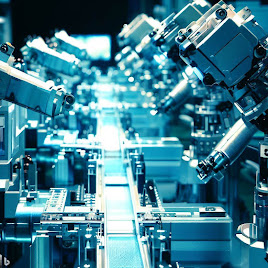
Automation has revolutionized industries across the globe, transforming the way we work and reshaping the workforce. From manufacturing and logistics to healthcare and customer service, automation technologies have brought efficiency, precision, and scalability to various sectors. However, this technological advancement has also raised concerns about potential job displacement and the need for upskilling. In this article, we will explore the impact of automation on the workforce, the challenges it presents, and the opportunities it brings.
1. The Rise of Automation:
Explain the growth and widespread adoption technologies in different industries. Discuss the benefits of automation , such as increased productivity, reduced costs, improved quality control and enhanced safety measures. Highlight specific example of automation implementation and its positive effects on businesses.
2. Job Displacement and Reskilling:
Discuss the concerns and fears surrounding automation, particularly the potential loss of jobs. Analyze which industries and occupations are most susceptible to automation and provide statics on the scale of potential job displacement. Explore the concept of reskilling and how individuals can adapt to the changing job market by acquiring new skills that complement automation technologies.
3. Collaboration between Humans and Automation:
Explain the concept of human-automation collaboration, where humans and machines work together to achieve optimal results. Discuss how automation can augment human capabilities, leading to higher job satisfaction, increased creativity , and the ability to focus on more complex tasks. Provide examples of successful human-automation collaboration and highlight the importance of human skills such as critical thinking and problem solving in conjunction with automation
4. Ethical Consideration and Social Impact:
Examine the ethical dilemmas associated with automation, such as privacy concerns, biases in algorithmic decision making and the potential exacerbation of socioeconomic inequalities. Discuss the need for ethical frameworks and regulation to ensure responsible to ensure responsible implementation of automation technologies. Address the social impact of automation including potential changes in the division of labor income distribution and the need for social safety nets.
5. Opportunities for the Workforce:
Explore the opportunities that automation presents for the workforce. Discuss how automation can lead to the creation of new jobs the emerges of specialized roles in managing and maintaining automation systems and the potential for entrepreneurship and innovation. Highlights the importance of lifelong learning and continuous adaptation to leverages automation technologies for career advancement.
6. Conclusion:
Summarize the key points discussed in the article and emphasize the importance of understanding the impacts of automating on the workforce. Encourage individuals, businesses and policymakers to embrace automation as an opportunity for growth while also addressing the challenges it poses. Emphasize the need for proactive strategies to ensure aa smooth transition into an automated future where humans and machines work together to create a more productive and inclusive society.
No comments:
Post a Comment